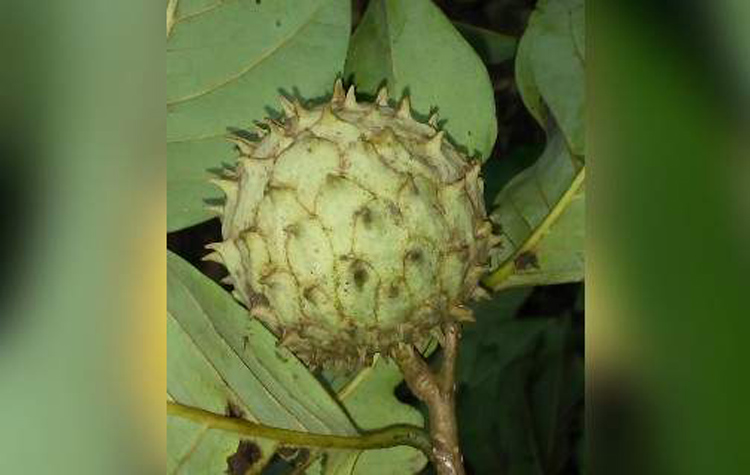(Jamaica Observer) JAMAICAN scientists are now engaged in a drive to locate and protect two endemic plants that flower and bear fruits.
The two — Annona praetermissa (Wild cherimoya) and Annona jamaicensis (Wild soursop) — are rare, which is most likely attributed to habitat loss from clearance of land for development and farming.
“Since the early 1900s there has been no up to date information on these plants. There are only herbarium specimens of their fruit and leaves in Jamaica and overseas,” terrestrial biologist Damion Whyte told the Jamaica Observer yesterday.
The plants, he explained, are members of the Annonaceae family, which include soursop ( Annona muricata), sweetsop ( Annona squamosa), and custard apple ( Annona reticulata).
“There are approximately 2,400 known species worldwide. Jamaica is a special country where we have over eight native species, of which two are endemic. We also have some hybrids that people have brought in to Jamaica,” Whyte said, adding that the majority of the island’s native Annonas are found in the lowlands, with the endemic varieties favouring the highland regions over 3,000 feet.
He noted that the Annona praetermissa is the rarest of the Annonas in Jamaica and, by extension, the world. He and his fellow scientists, he said, have been trying for years to locate it, but have received information that it can only be found in St Andrew and St Thomas.
“The tree generally grows to about 15 feet, producing fruits with a bumpy appearance similar to a green custard apple or another member of its family, the Cherimoya ( Annona cherimola), which is native to sections of Central and South America. Unfortunately, there are no recent photos of the plant or its fruit in the wild. The last specimens were collected in the early 1900s. There are also some specimens in Jamaican and international collections,” Whyte told the Observer.
The Annona jamaicensis, he said, is possibly restricted to seven of the island’s 14 parishes.
“The tree reaches a height of 30 feet, making it the tallest of the Annonas in Jamaica. The fruit opens when ripe and its bitter taste is likened to Annona montana (mountain soursop). A few trees have been found in Troy, located in the Cockpit Country, where it is referred to as ‘Duppy soursop’,” Whyte said.
“In order to protect the trees it is important to know their locations and conduct relevant studies,” Whyte explained. “The genetic information contained in these plants is potentially invaluable, as the plant could prove useful in creating hybrids as a result of its natural occurrence and endemism. Both qualities are preferred for successful hybridisation towards creating new species. This will support ongoing work in the global scientific community to produce Annona hybrids, such as the Atemoya ( Annona atemoya), widely regarded as the best-tasting Annona in the world. It is 10 times sweeter than the custard apple.”
He said given the limited information on the number and location of these rare trees across the island, the public is being asked to assist current efforts to find them by taking a clear picture and sharing the locations with him via e-mail dl_whyte@yahoo.com, on Twitter @Roosters_world, or Instagram @Roosters_world1.
“This plant is part of Jamaica’s rich natural history,” he said.






